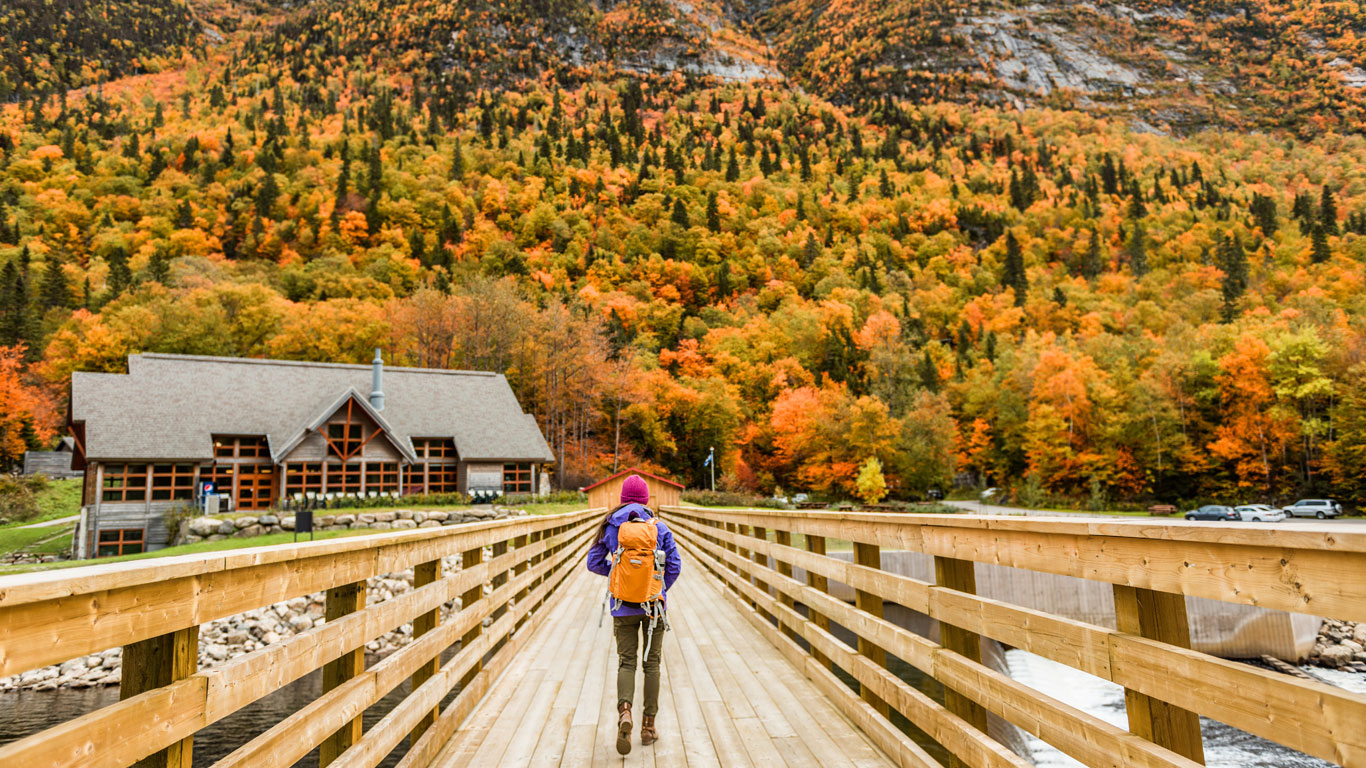
Escaping the big city for idyllic small town life
For thousands of Canadians, that weekend escape to cottage country or a ski resort became a full-time home over the last few years.
Some of Canada’s fastest growing small towns outside of urban centres from 2016 to 2021 were located within a two-hour drive of Toronto, Montréal or Vancouver. Many of these small towns were found in cottage country or near a ski resort, with all the amenities that go with it including nearby nature, boating, golfing, skiing, and “après-skiing.”
The Laurentians are a big draw in Quebec, but some South Shore towns are growing fast too
In total, four of the ten fastest growing municipalities of 5,000 or more people outside urban centres in Quebec were found in the Laurentians north of Montréal, with Saint-Hippolyte growing at the fastest pace in the region (+17.1%). The ski and golf resort towns of Mont-Tremblant (+14.0%) and nearby Saint-Sauveur (+13.2%) were the fourth and sixth fastest growing municipalities in Quebec among those located outside urban centres.
Contrecoeur, situated on the south shore of the St. Lawrence River 45 minutes east of Montréal, was the fastest growing municipality in Quebec among those located outside urban centres, with its population rising by one-fifth (+20.2%) from 2016 to 9,480 in 2021.
Some of Ontario’s fastest growing small towns are in cottage or ski country
Six of the ten fastest growing municipalities outside urban centres in Ontario from 2016 to 2021 were in cottage country, about two hours north of Toronto.
The ski resort town of Blue Mountains, located just west of Collingwood on Georgian Bay, was the fastest growing municipality in Ontario among those located outside urban centres, with its population rising by one-third to 9,390.
Ontario’s second fastest growing municipality outside urban centres, Seguin, located just south of hockey legend Bobby Orr’s hometown of Parry Sound, grew by almost one-quarter to 5,280. The population of Muskoka Lakes, one of Ontario’s most famous getaway destinations, grew 16.2% from 2016 to 2021.
Three towns in farm country about two hours east of Toronto were also among the ten fastest growing outside urban centres in Ontario, with the population of Lucan Biddulph, Southgate and North Perth all rising by about one-fifth.
West coast islands and the mountainous interior are a big draw in British Columbia
A table of the ten fastest growing small towns in British Columbia outside urban centres reads like a tourist brochure for the province.
Five of the ten fastest growing municipalities in British Columba outside urban centres from 2016 to 2021 were located near ski resorts. Whistler (+19.0%) and Fernie (+17.1%) were the fastest growing ski towns in the province.
Southern Gulf Islands (+28.9%), nestled between Vancouver and Victoria in the Juan de Fuca Strait, is the fastest growing town outside urban centres in the province. The populations of nearby Salt Spring Island and Nanaimo on Vancouver Island both grew by one-tenth.
What’s behind this move to small-town Canada?
The populations of these fastest growing towns outside of urban centres rose at about twice the pace of nation as a whole (+5.2%) and over 20 times faster than rural Canada (+0.4%).
Why is this happening?
The COVID-19 pandemic is undoubtedly a factor, given that it has had a profound effect on how we live and work. In early 2021, for example, we found that about one-third (32%) of Canadians were working from home and therefore no longer needed to commute, up eightfold from five years earlier when 4% of workers did so.
Approximately 4 in 10 jobs in Canada currently can be done from home, with the likelihood of being able to telework rising with education level. Not needing to commute five days a week greatly expands your options when it comes to choosing where to live.
Another reason might also be demographic. In July 2021, according to population estimates, just over 5.3 million Canadians were aged 55 to 64, a time when people make retirement plans, including how to capitalize on a hot housing market to get a return on the investment made in a home years earlier.
For example, from 2016 to 2021, new home prices were up by over one-third in Montréal (+36.0%) and over one-fifth in Vancouver (+22.0%). New home prices in Toronto were up by 14.3%.
In 2021 alone, new home prices in Montréal were up by 17.0% from a year earlier. New home prices in Vancouver (+10.9%) rose at a faster pace than the national average of 10.3% in 2021, while prices in Toronto lagged behind (+6.7%).
The money made from selling a home in Canada’s three largest cities will likely go a lot further the farther you move beyond the city limits. You will also probably have some spare money to spend on the boat, dock, deck or skis that you just may be needing in your new small-town home.
Contact information
For more information, contact the Statistical Information Service (toll-free 1-800-263-1136; 514-283-8300; infostats@statcan.gc.ca) or Media Relations (statcan.mediahotline-ligneinfomedias.statcan@statcan.gc.ca).
